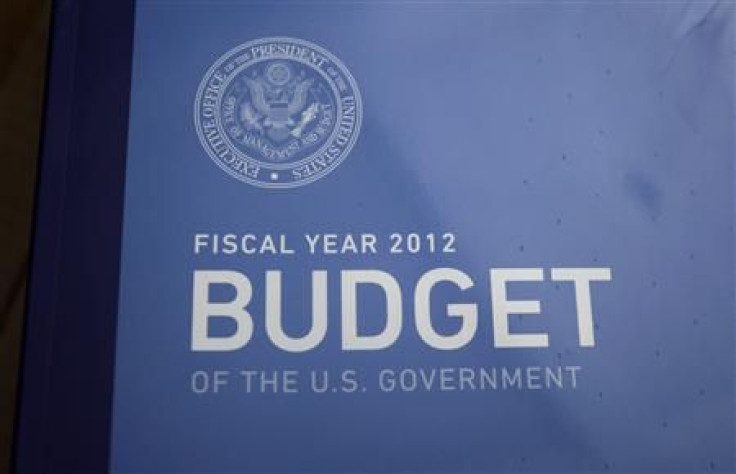Federal IT Budget Backs Growth in Cloud Plays

U.S. President Barack Obama's proposed 2012 Federal budget included proposals to improve the inefficiencies in government data centers. The budget outlines the adoption of cloud-computing and virtualization technologies to lower IT spending costs and increase agility.
In the proposed budget, planned spending on IT is expected to reach $79.5 billion, up 2 percent from 2010 enacted levels of $78.0 billion. This modest increase is actually better than we had expected -- we expected a cut, Barclays Capital said in a note to clients.
The Federal Government had only 432 data centers in 1998 but this figure has increased 385 percent over the 12-year period since to 2,094 data centers as of 2010. Through the proposed program of deploying cloud-based architectures and virtualization technologies, the Office of Management and Budget (OMB) expects to reduce the number of data centers to 1,284 by 2015.
The OMB believes that it will be able to reduce costs and reduce its IT foot-print by implementing a cloud-based strategy that promotes the overall reduction in data center space used by the Federal Government.
The group cited its previous reliance on proprietary, custom IT solutions that drove costs significantly higher than projections as the ultimate factor in its decision to shift its IT strategy toward a cloud-based approach.
While Barclays Capital still expects State & Local budgets to be a major problem for companies, the modest increase in federal IT spending through 2012 is a welcome surprise. Also, it is clear that those companies well positioned in cloud computing solutions should actually see a disproportionate amount of that increase.
We believe certain companies in the IT hardware and software sectors have the potential to see outsized benefits from this strategic shift to a cloud-based approach from the federal government, Barclays analysts say.
Hardware
In IT Hardware, Barclays analyst Ben Reitzes believe that vendors such as EMC Corp. (EMC), due in large part to its ownership of VMware Inc. (VMW), and NetApp, Inc. (NTAP) are best positioned.
Reitzes believes that NetApp is particularly leveraged to benefit from this trend as well given that Federal government accounts for about 10 percent to 15 percent of its revenue, and he believes that NetApp’s share is even higher than its average in this particular vertical.
Dell Inc. (DELL) and International Business Machines Corp. (IBM) also have meaningful federal exposure but Reitzes believes that Dell will see some pluses and minuses with the shift (he estimates US federal accounts for 6 percent of Dell’s revenues).
Reitzes said IBM will likely see less investment in its proprietary systems, but should be able to benefit from large services deals to transform IT architecture (he estimates US federal accounts for 5 percent of IBM’s revenues).
Software
In software, Barclays analyst Israel Hernandez expects shifting spending priorities to benefit several vendors in his coverage universe. Hernandez believes VMware, with 10 percent to 15 percent federal exposure, is likely to be a major beneficiary as server virtualization is the fundamental building block of data center consolidation and cloud computing.
Hernandez also highlights Citrix Systems, Inc. (CTXS), Informatica Corp. (INFA), Microsoft Corp. (MSFT) and Red Hat, Inc. (RHT) as potential beneficiaries.
Hernandez expects Sourcefire‘s federal business to remain under pressure in 2011 (no change in outlook), though the federal government’s focus on intrusion prevention is a potential catalyst for 2012.
In data center consolidation trends, Red Hat should benefit from proprietary server platforms such as Unix to x86 systems and Linux. Hernandez also believes that data integration vendor Informatica is likely to play an important role in migrating legacy data and applications to cloud infrastructures.
In addition, Hernandez believes vendors such as Citrix Systems in desktop virtualization and Salesforce.com (CRM), with its growing portfolio of SAAS applications and platform-as-a-service options could also see benefit over time.
Microsoft should see a similar shift to Windows Server as older, proprietary systems are replaced and upgraded. Hernandez believes Microsoft should also be a net beneficiary given its large federal footprint, with Azure likely to become a preferred platform-as-a-service architecture for running Windows infrastructure and applications.
Hernandez noted, however, proposed plans to move email and productivity suites to the cloud introduce the potential for pricing pressures or share losses from competing vendors, chiefly Google Inc. (GOOG), targeting the public sector market as a growth opportunity.
Cybersecurity Remains Top Priority
Not surprisingly, cybersecurity remains a top IT priority given increasing threats to the nation’s infrastructure from criminals and nation-states.
Working with the private sector, the federal government’s investment plans call for ongoing vulnerability assessments of all agency infrastructures in conjunction with the Department of Homeland Security, enhanced cybersecurity monitoring, management and reporting as required by the Federal Information Security Management Act (FISMA) and the upgrading of intrusion detection and prevention systems.
Hernandez sees vendors such as Symantec Corp. (SYMC), Sourcefire, Inc. (FIRE) and Hewlett-Packard Co. (HPQ) (ArcSight) as most levered to federal cybersecurity spending in fiscal 2012, though fiscal 2011 is likely to remain under pressure due to budget constraints and a dearth of new project spending.
With fiscal 2011 still operating under a continuing resolution, with little money available for new projects, we expect Sourcefire‘s federal business to remain under pressure in 2011, though the federal government’s focus on intrusion prevention is a potential catalyst for 2012, said Hernandez.
© Copyright IBTimes 2024. All rights reserved.











